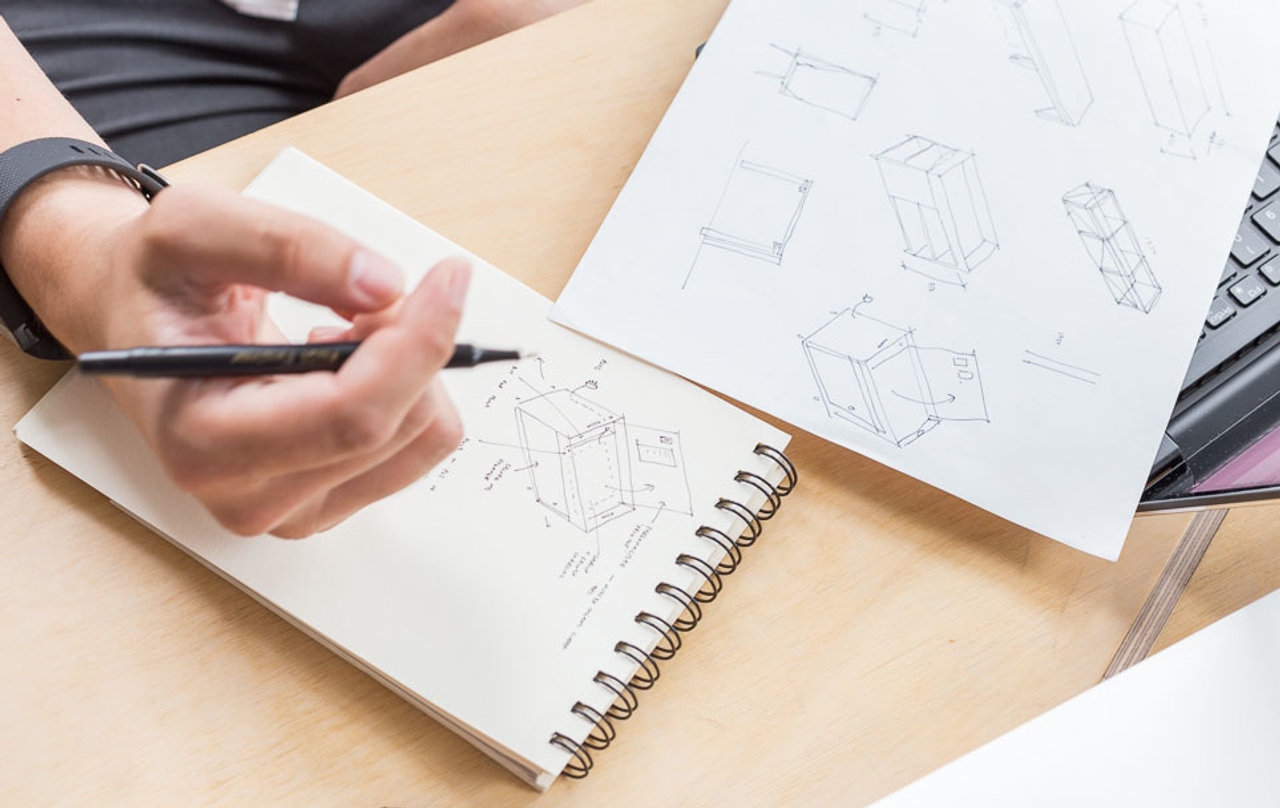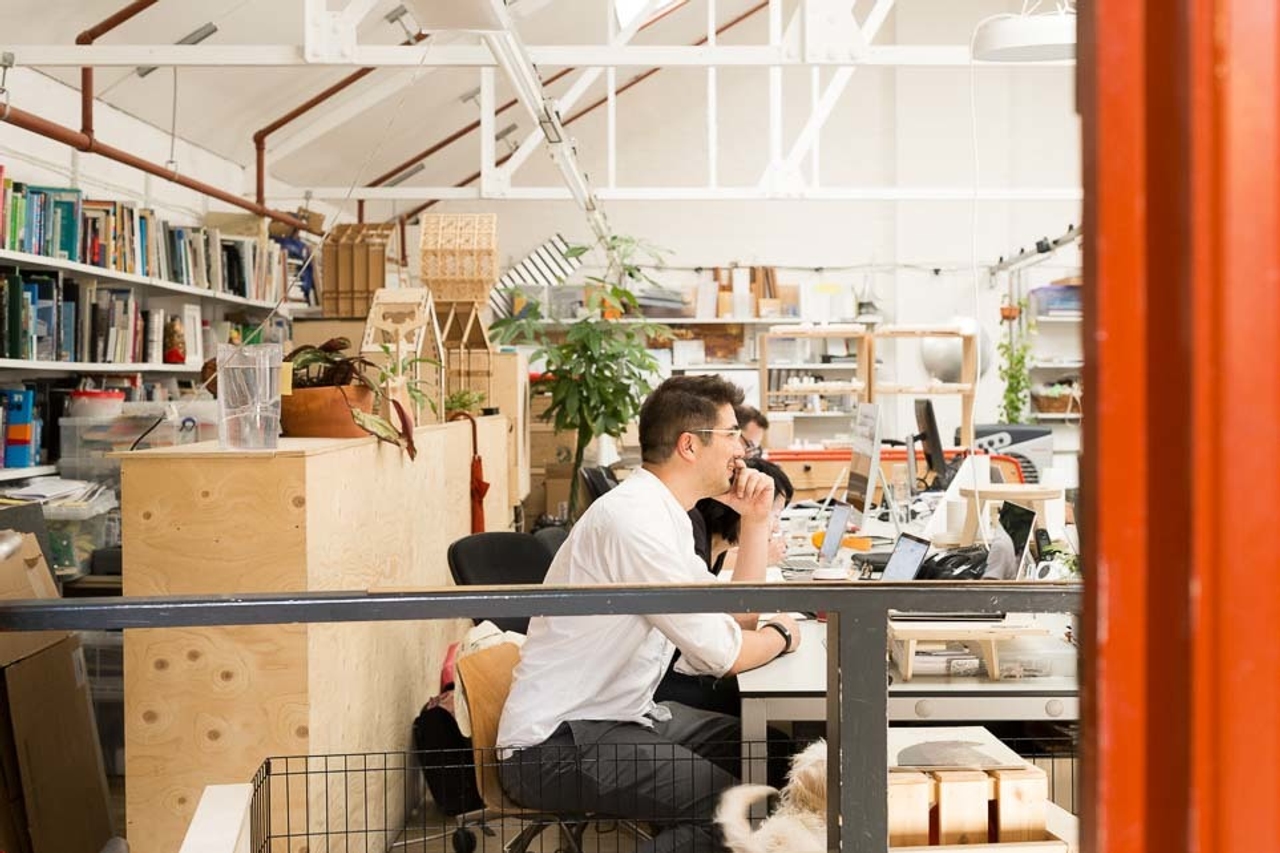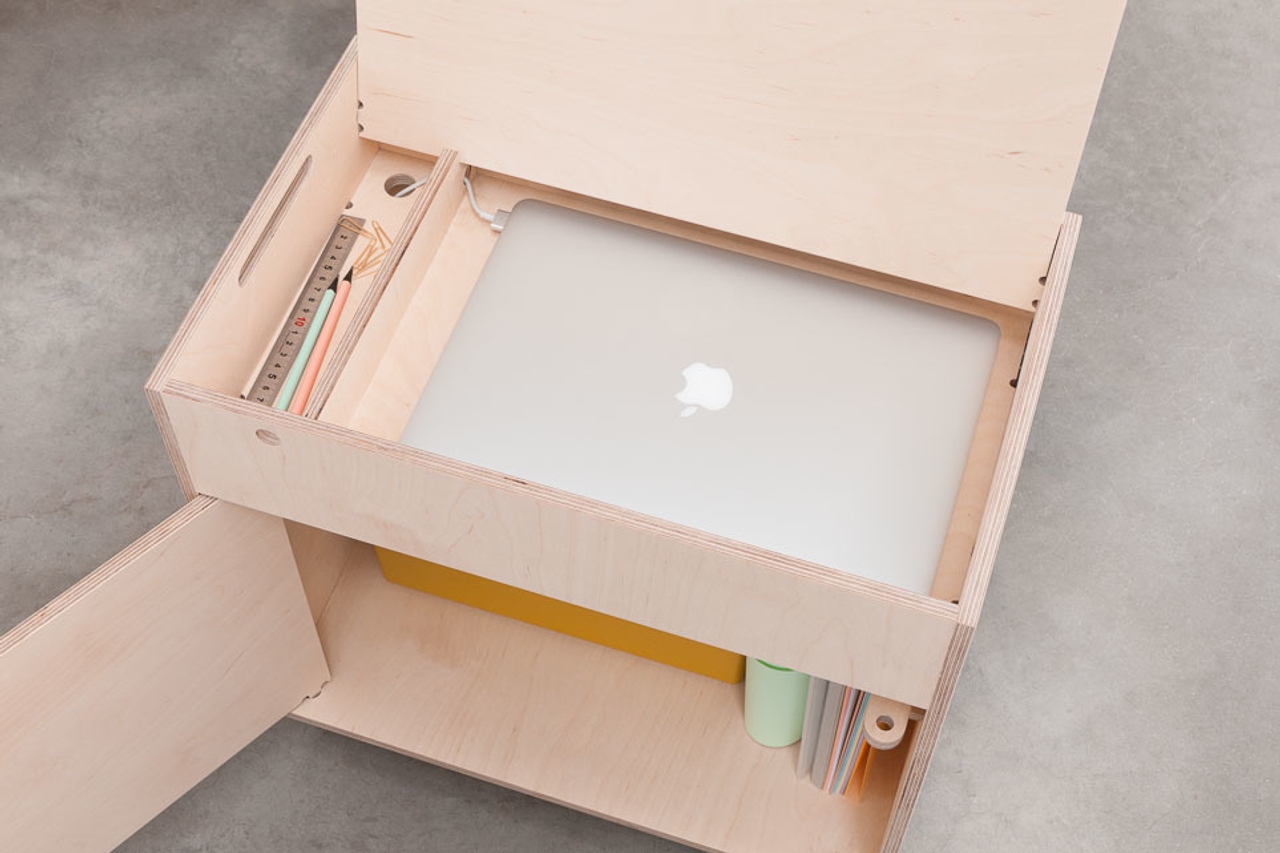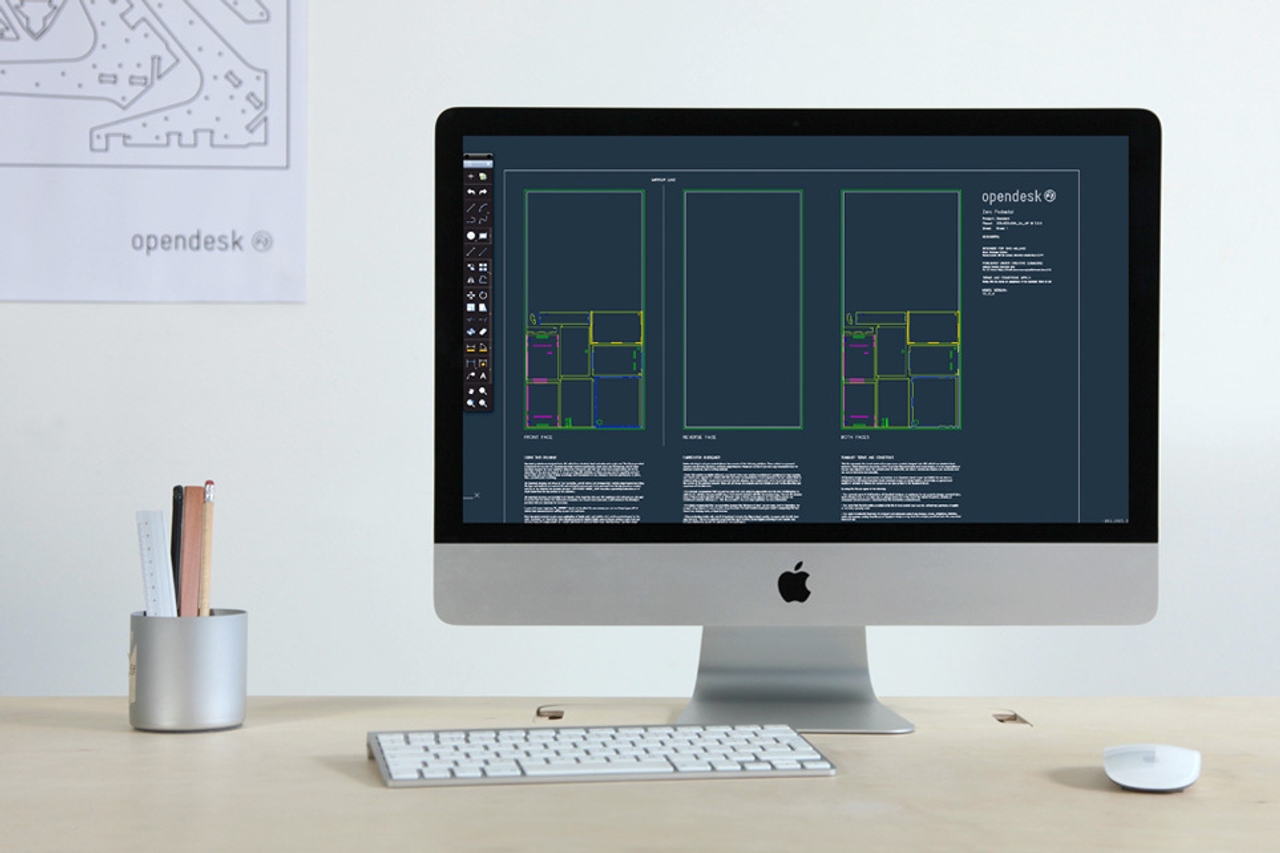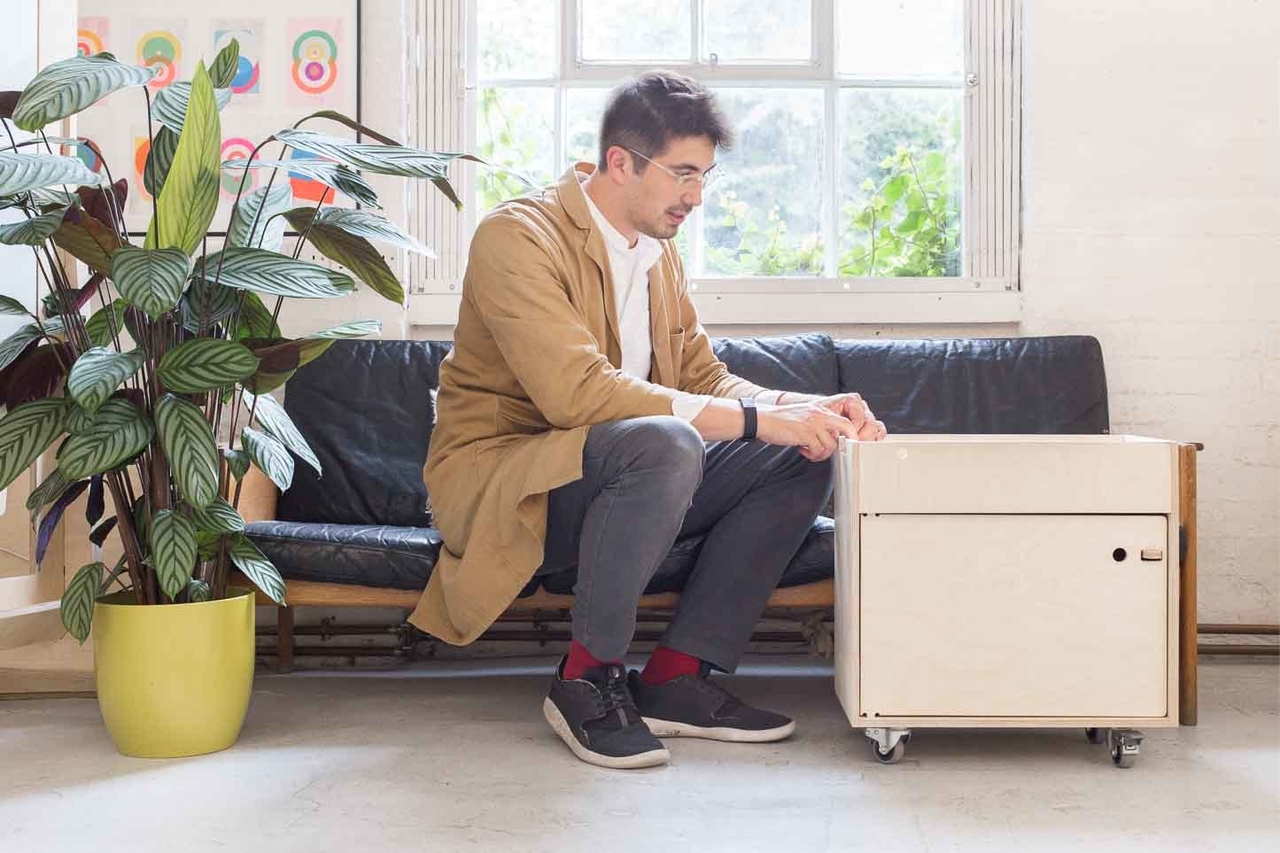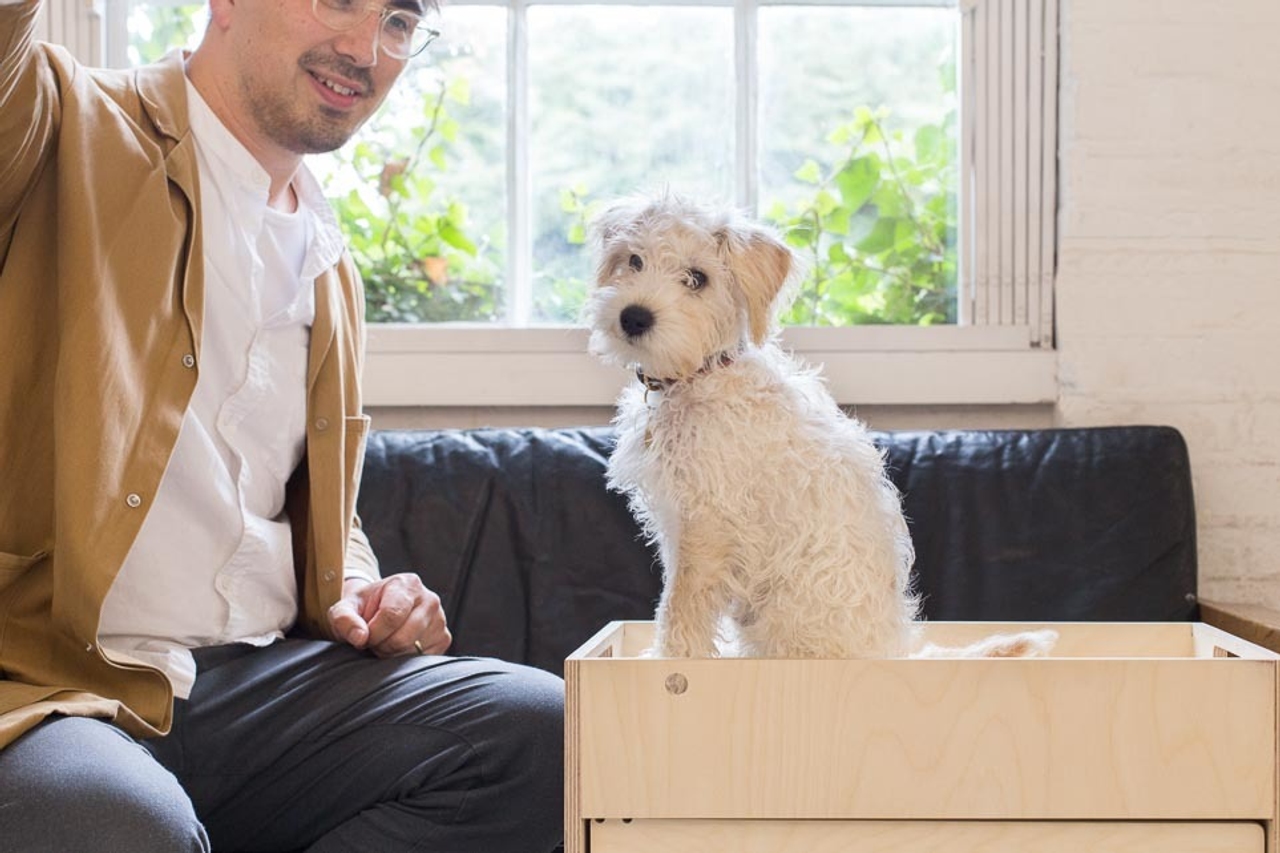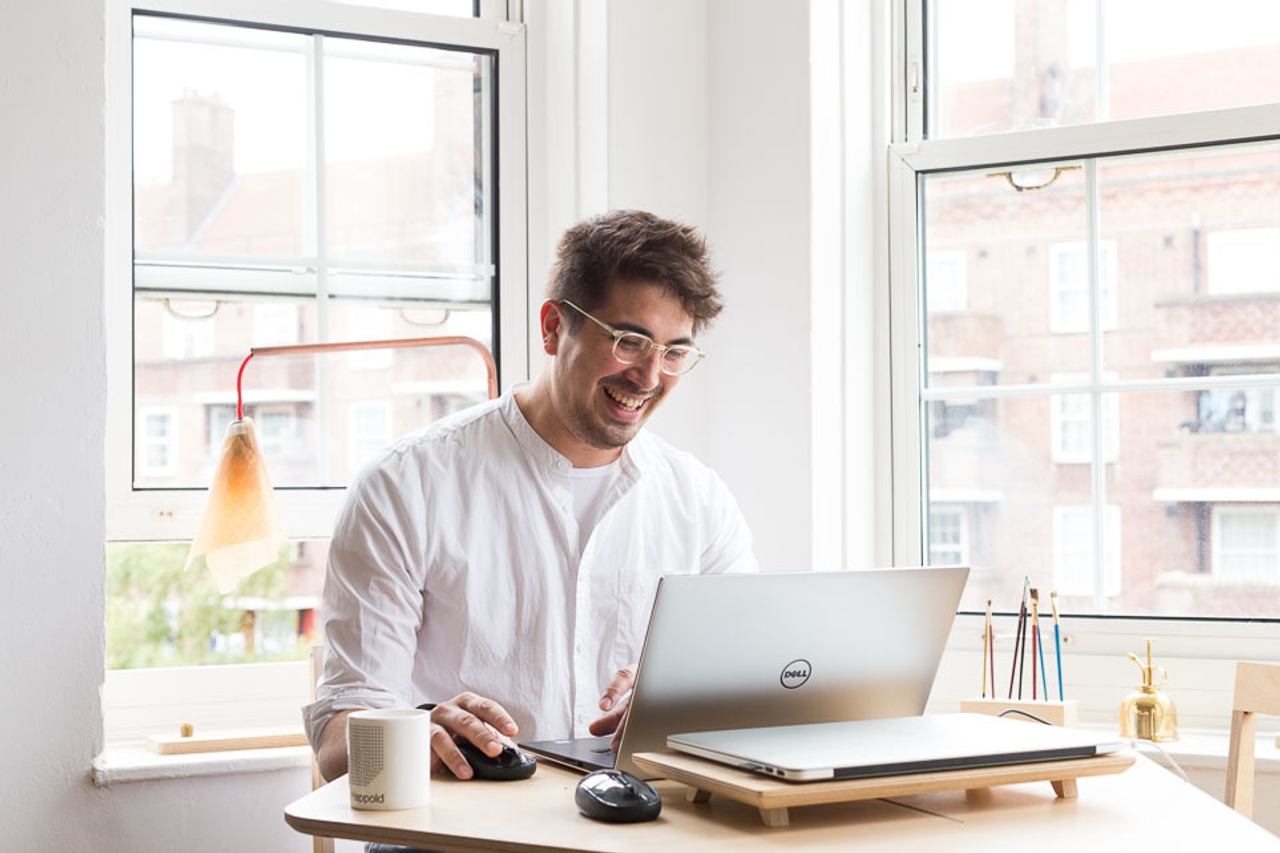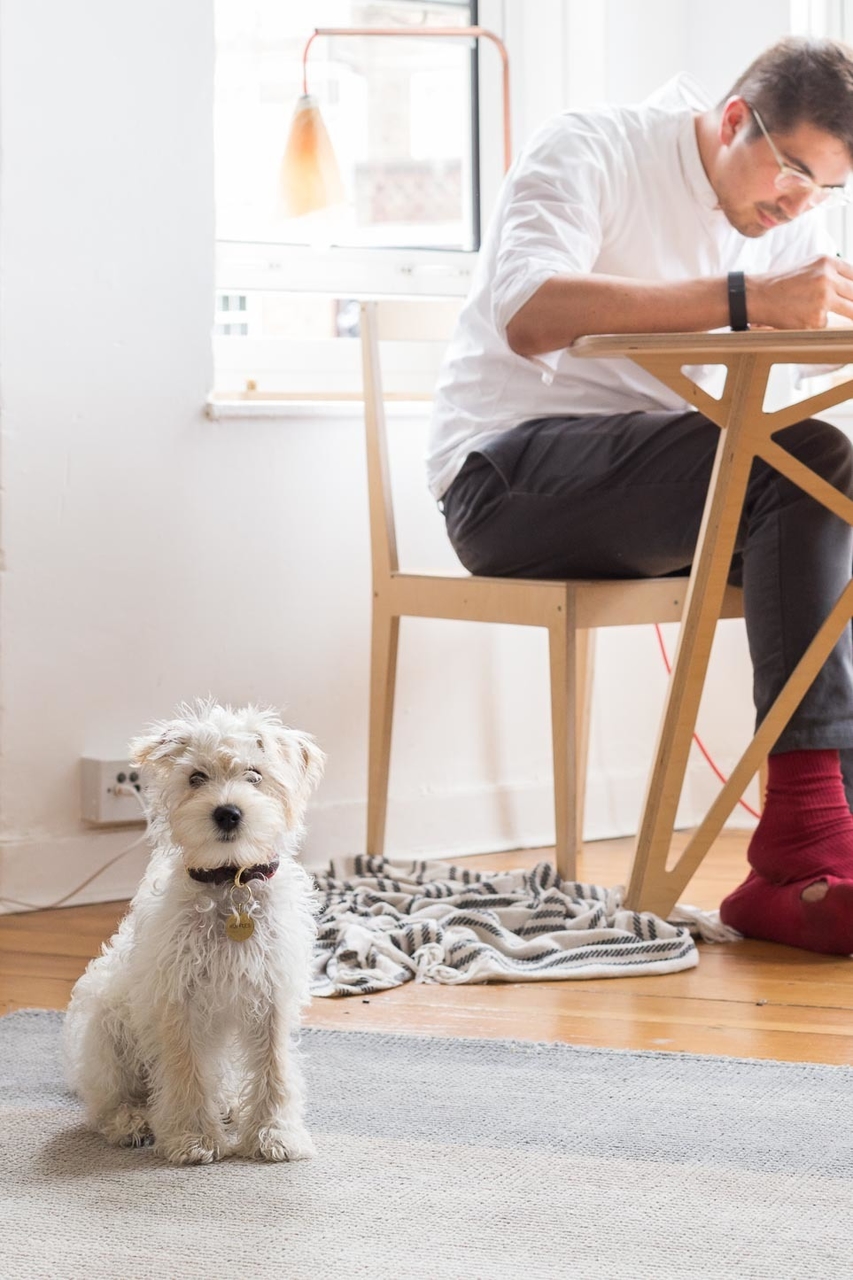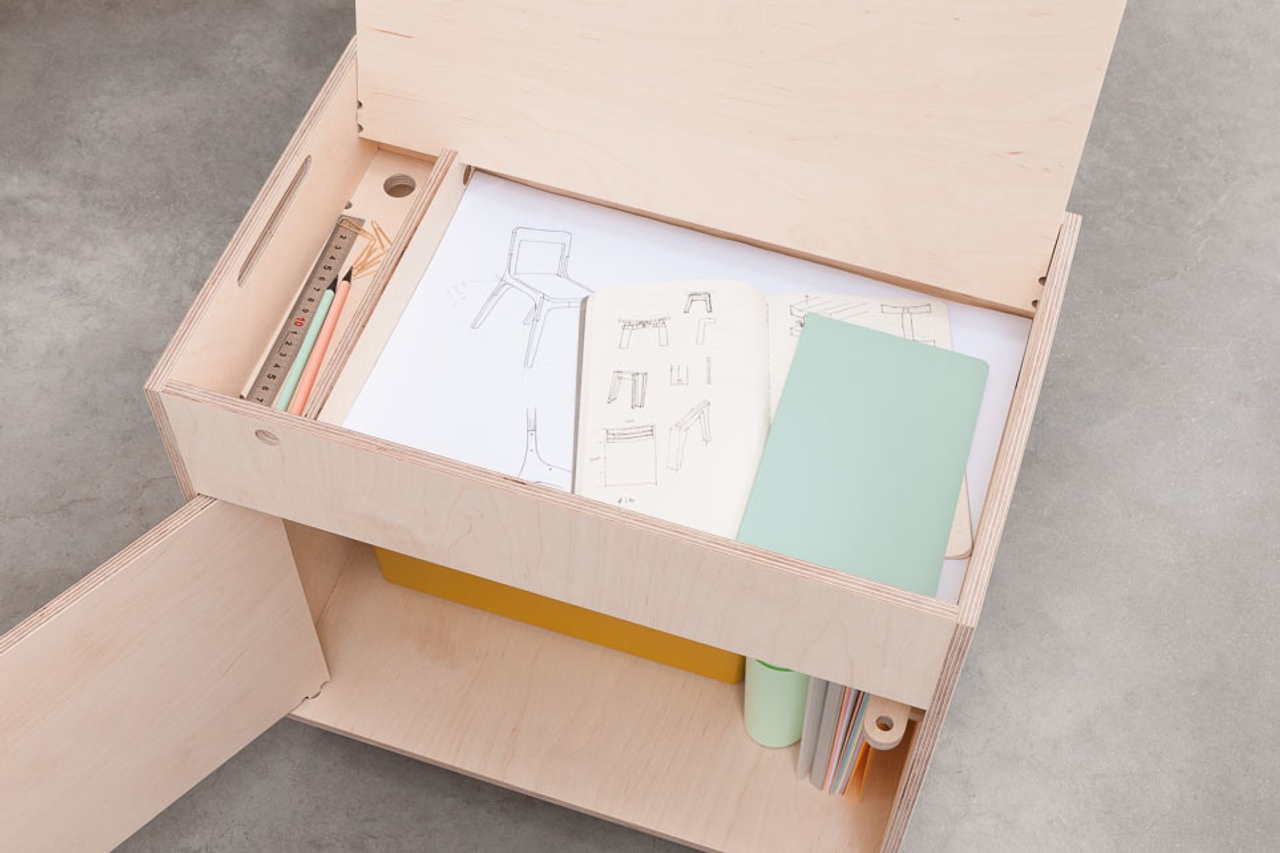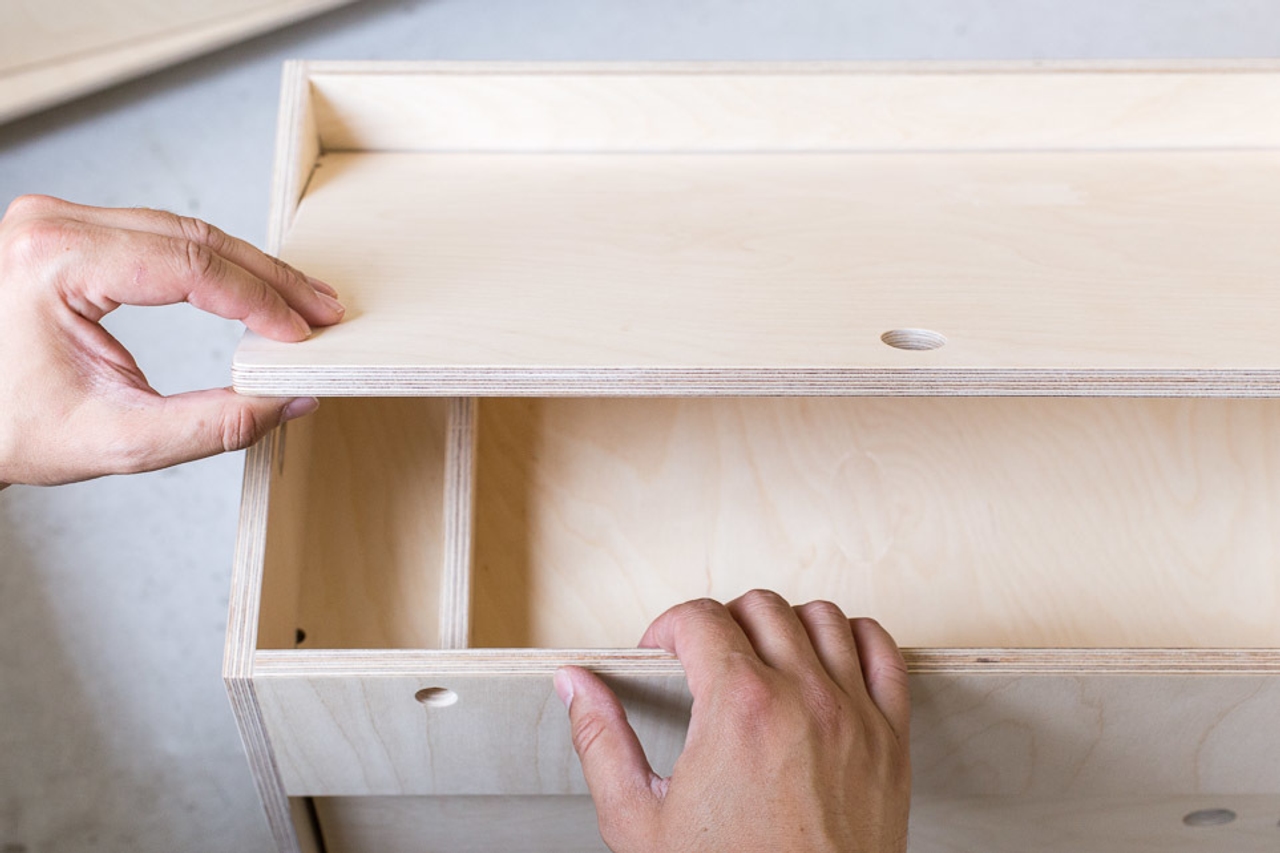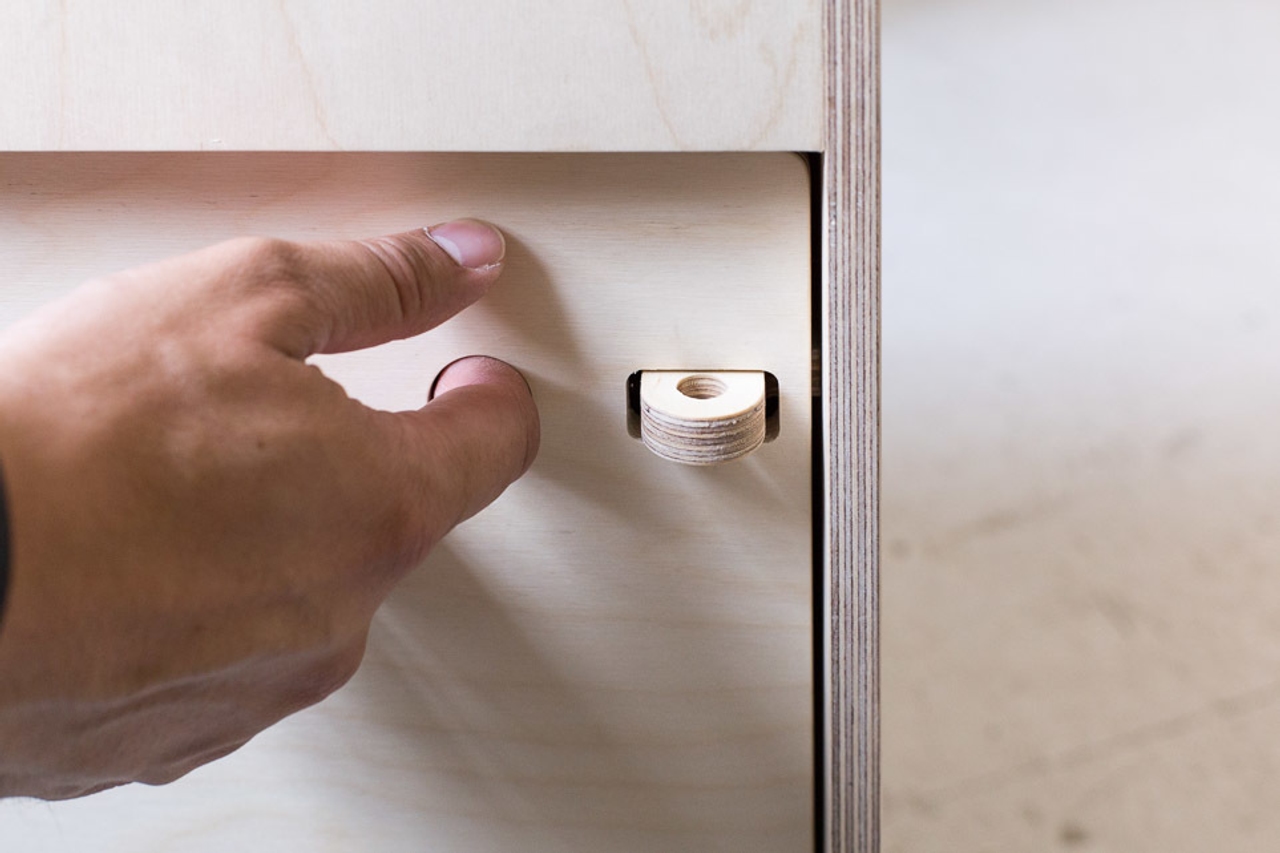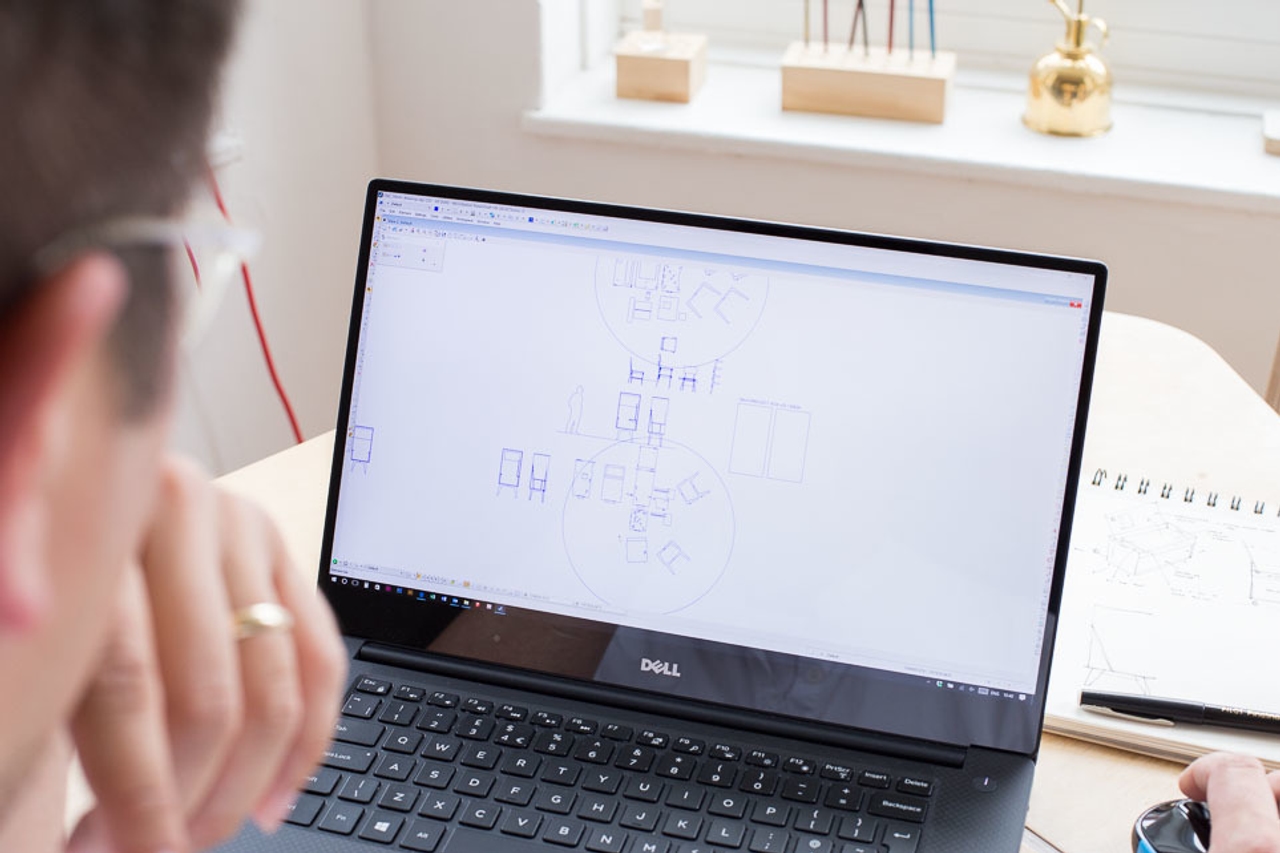Design Revamp: Lynton’s Pedestal
It’s been over eight years since old friends Joni and Lynton designed their very first CNC milled storage box. What started in 2008 as a simple box on wheels has been slowly iterated into a storage solution that’s perfect for co-working spaces and home offices alike. Wherever and whatever your work, Lynton’s Pedestal is the perfect storage sidekick.
Whilst only part of the Opendesk collection since April 2015, the Pedestal began life as a simple box on wheels eight years ago at Architecture 00. Good friends, co-founders and colleagues at 00, Joni and Lynton wanted to design a storage system for personal items and A3 drawings. After many years of iteration, Lynton has continued to evolve the design with input from countless contributors.
Perfect for home offices, co-working spaces or large offices, Lynton’s Pedestal is the ideal companion for any workstation. This little partner keeps your desk clean and organised by providing personal and private storage within arm’s reach. A large compartment at the front provides ample room for files and books whilst the top compartment provides storage space for laptops, stationery and papers up to A3 in size. A fold up lid on the top compartment acts as a user’s personal ‘desktop’ for pictures, notes and to-do lists. Clever cable management allows a laptop to be charged whilst stored away in the top compartment. For those storing valuables, padlocks can be used to secure both compartments. Locally sourced castors allow the Pedestal to be moved around with ease.
Lynton’s latest design revamp introduces improvements which greatly reduce material wastage. All the components now fit perfectly onto half a sheet of 8’x4’ birch plywood, meaning the remaining half is a useful size and can be used elsewhere. In an effort to improve our service for Makers, we’re ensuring all designs in our collection can fit onto standard size sheets of material in logical ways. Components for a desk or chair should fit onto either a full sheet, half a sheet or a quarter sheet. This way makers are left with useful chunks of material rather than awkward off-cuts.
Lynton’s Pedestal is the result of years of Architecture and Design work at Architecture 00, a practice with a track record in delivering a broad range of activities relating to the shaping of our built environment. Founded in 2005 by a group that included Joni and Lynton, the practice brings together skills in action-led research, urban design strategy, architecture and place making with a detailed understanding of how the physical fabric of buildings can be accompanied by innovative, engaging and collaborative processes. The practice affords many freedoms to its team of architects, strategic designers, programmers, social scientists, economists and designers. This freedom leads to disruptive thinking and experiments - Opendesk and Wikihouse are two of the perhaps best-known experiments.
Photography by Peter Guenzel and Josh Worley
Video by Josh Worley
Music (in Pedestal video) by Fog Lake, Erik, licensed under a Creative Commons-Attribution license.
